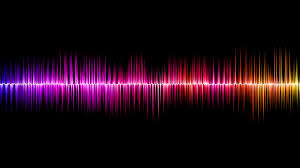 Voice tech is pervasive – for some, but hardware market adoption may be slowing. At the end of April, ninety million US adults were estimated to own smart speakers, one-third of consumers. The last published eMarketer survey in 2019 sized the software voice assistant (Siri, Google Assistant, Alexa et al.) as penetrating one third of the US population – 111.8 million. But according to a late 2019 AARP survey, only 20% of the 50+ population use voice assistants – and for the 70+, only 12%. For those that have them, they are being used daily. What’s holding the others back? Typically, as in this podcast from 'This Week in Voice' about Aging in Place, one hears the usual concerns about security and privacy, no doubt because older people have expressed those concerns. Note that 51% of 5000 responders in this 2020 global marketing survey worry about voice assistants listening to them without their consent. Also note that the survey extended to boomers (those aged 56 to 74) who apparently cared less than younger people.
Voice tech is pervasive – for some, but hardware market adoption may be slowing. At the end of April, ninety million US adults were estimated to own smart speakers, one-third of consumers. The last published eMarketer survey in 2019 sized the software voice assistant (Siri, Google Assistant, Alexa et al.) as penetrating one third of the US population – 111.8 million. But according to a late 2019 AARP survey, only 20% of the 50+ population use voice assistants – and for the 70+, only 12%. For those that have them, they are being used daily. What’s holding the others back? Typically, as in this podcast from 'This Week in Voice' about Aging in Place, one hears the usual concerns about security and privacy, no doubt because older people have expressed those concerns. Note that 51% of 5000 responders in this 2020 global marketing survey worry about voice assistants listening to them without their consent. Also note that the survey extended to boomers (those aged 56 to 74) who apparently cared less than younger people.
Is it furniture or feature? The statistics about ownership and usage of voice tech are staggering. But tech spending has jumped across all age segments since the pandemic began. According to eMarketer’s newest report Better Be Nice to the Boomers, the 55+ population specifically has increased its digital spending 47%. So let’s say you have an assistant on your smartphone and a smart speaker in your house. You tap, speak directives or even yell at them in annoyance. You expect these offerings to play music, set a timer, answer a question accurately, or to shut up when we say. Like the increasingly rare stereo speaker in the home, the smart speaker is a connected appliance. What will be the year that an uptick in usage for smart speakers and voice assistants turn them into commodity concepts, embedded in devices, expected in homes at miniscule price points, but not actually a standalone category at all?
2020 is that year – when a category is subsumed into technology ecosystems. In 2018, the emergence of voice technology was heralded by many as ‘magical’ and for older adults it was viewed (including by analysts) as enormously appealing and with high potential. Judging by the downloads of The Future of Voice First Technology and Older Adults 2018, industry observers saw the potential. From the Commonwealth Care Alliance to the CTA Foundation, voice was predicted to become part of the "accessible ecosystem." Many of the predictions in that 2018 report -- from the migration of the user experience to customized conversations to remembered context to the growth of personalization -- have already happened. And most important, voice capabilities are gradually being incorporated into the healthcare ecosystem – at a faster rate for medical dictation, at a slower rate for an effective and pervasive patient experience.
For older adults, up next, a remote care technology ecosystem. In 2020, in the midst of a pandemic of isolation and distance, voice tech now looks like another tech feature, found in every conceivable place – from the car to the kitchen. What older adults need is a broad set of remote care capabilities that include but are not limited to voice access. That urgent requirement came into sharper focus during the pandemic. Music and recipes, that's nice. Fetching a ride or answering a healthcare question are nice-to-haves, especially when visiting the doctor is off-limits. But the gaps of access and tech capability were sharp and in focus during the pandemic. That chasm highlighted the isolation in senior care facilities and in seniors' homes, the tragic distance from families. And it highlighted the lack of access to health providers. Consider the rise of telehealth, but also consider the wave of ageism that surfaced in the media, accentuating and predicting further isolation of older adults. Consider what isolation means for the elderly with dementia, for families cut off from in-person visits, and what the caregiving nightmare has been like in nursing homes. Tech firms that think they are in the 'Voice First' industry need to adjust to being in the broader tech industry that includes telehealth, sensors, smartphones, wearables, smart televisions, and caregiving software. Voice-enabled is appropriate and useful, but now let's see more of the older adult world tech-enabled. Period.

 Voice tech is pervasive – for some, but hardware market adoption may be slowing. At the end of April,
Voice tech is pervasive – for some, but hardware market adoption may be slowing. At the end of April,